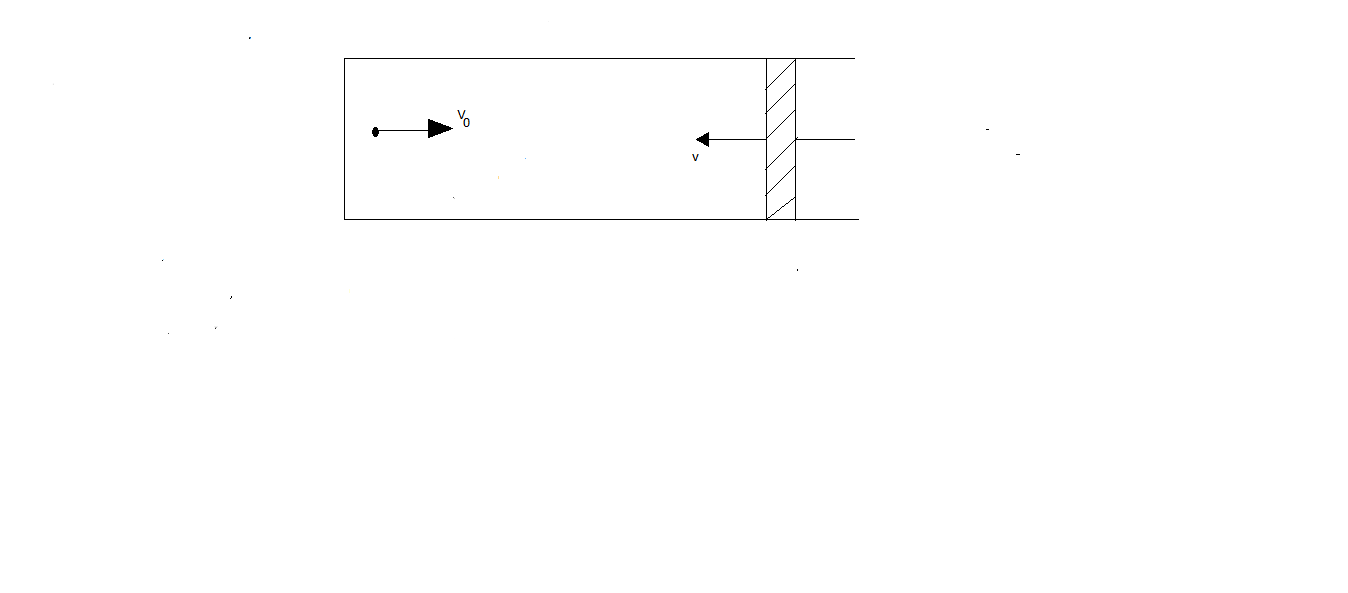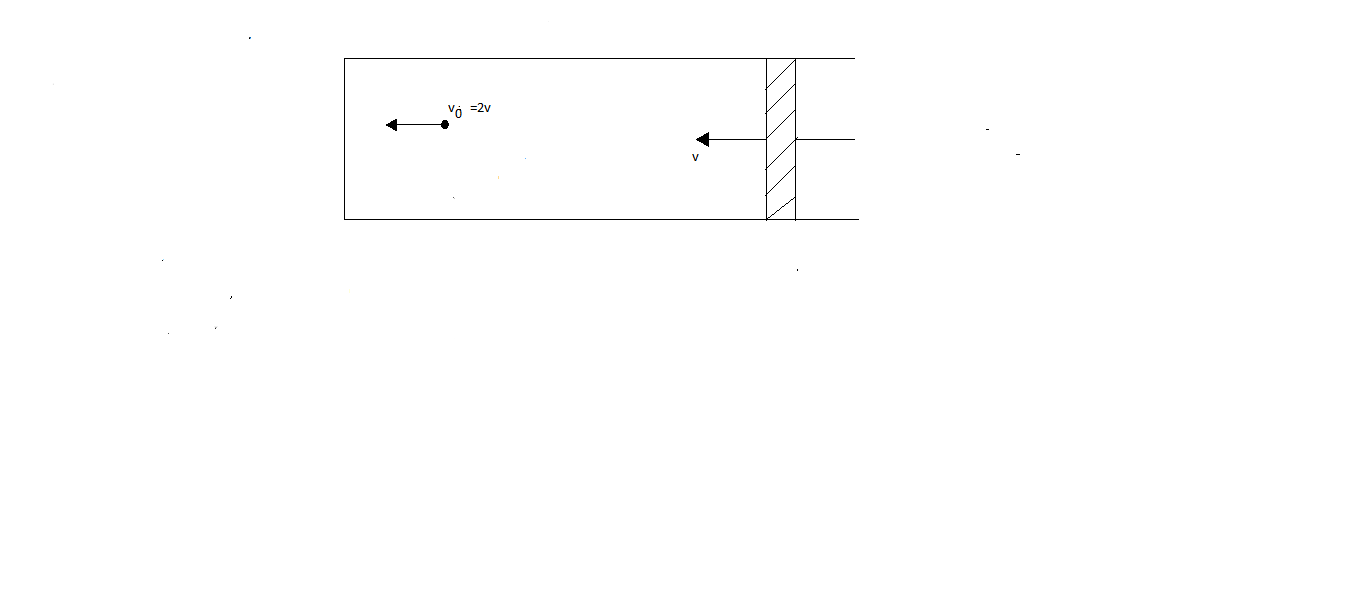Question
Question: A small particle of mass \( m \) moving inside a heavy, hollow and straight tube along the tube axis...
A small particle of mass m moving inside a heavy, hollow and straight tube along the tube axis undergoes elastic collision at two ends. The tube has no friction and it is closed at one end by a flat surface while the other end is fitted with a heavy movable flat piston as shown in the figure, when the distance of the piston from the closed end is L=L0 the particle speed is v=v0 . The piston is moved inward at a very low speed such that V<<LdLv0 . Where dL is an infinitesimal displacement of the piston.
Which of the following statements is correct?
A. After each collision with the piston, the particle speed increases by 2V
B. If the piston moves inward by dL , the particle speed increases by 2VLdL
C. The particle’s kinetic energy increases by factor of 4 when the piston is moved inward from L0 to 21L0
D. The rate at which the particle strikes at the piston is Lv
Solution
Hint : In order to solve this question, we are going to see the conditions before and after the collision and the rate at which a particle hits the piston then, the speed of particle is found from the rate of change of velocity and afterwards the kinetic energies of a particle initially and finally.
The rate of change of velocity is
dtdv=f×2V
Kinetic energy, K=21×m×v2
m = mass \\\
v = velocity \\\
Complete Step By Step Answer:
The inferences that can be drawn from the question
Piston before the collision

After the collision,

The rate at which the particle strikes the piston is given by
=f=2xv
If x=L , then, f=2Lv
The rate of the change of speed of particle is
\dfrac{{dv}}{{dt}} = f \times 2V \\\
dv = \dfrac{v}{{2x}} \times 2Vdt \\\
dv = \dfrac{v}{{2x}} \times 2\left( { - dx} \right) \\\
Now integrating to find the velocity,
\Rightarrow \int\limits_{{v_0}}^v {\dfrac{{dv}}{v} = \int\limits_l^x {\dfrac{{ - dx}}{x}} } \\\
\Rightarrow \ln \dfrac{v}{{{v_0}}} = - \ln \dfrac{x}{l} \\\
\Rightarrow v = \dfrac{{{v_0}l}}{x} \\\
Now, taking the case, x=2L0
Then, if we find the velocity
v=L0v0L0×2
Now finding the kinetic energy at the value x=2L0
Kf=21×m×4v02
Kinetic energy at x=L0
Ki=21×m×v02
Therefore, the ratio of the kinetic energies is
KiKf=14=4
Therefore, the options that are correct are A and C.
Note :
After each collision with the piston, the particles hit the piston with more and more energy that is , the particle speed increases by 2V and if we find the corresponding particle’s kinetic energy , it increases by factor of 4 when the piston is moved inward from L0 to 21L0 .
